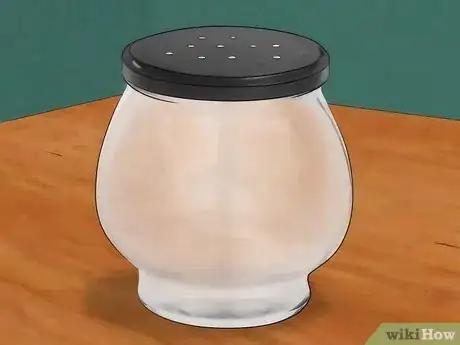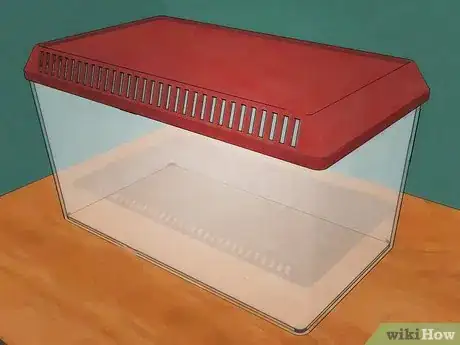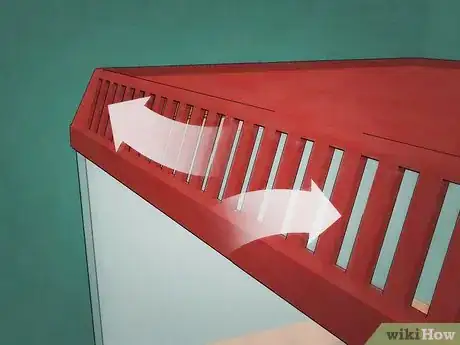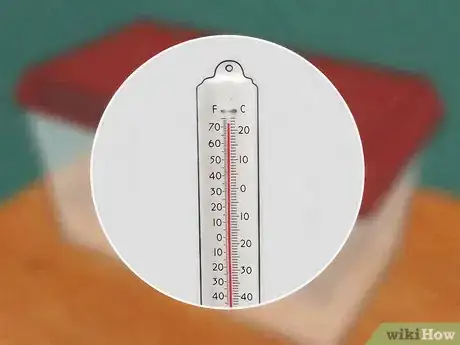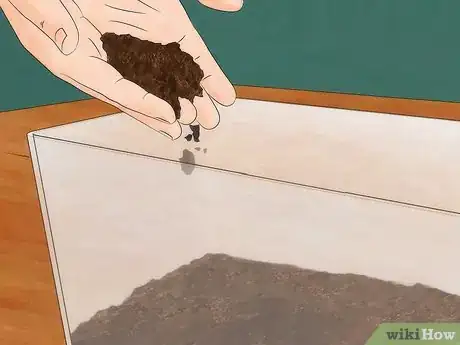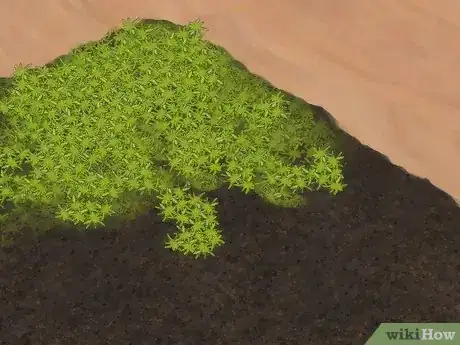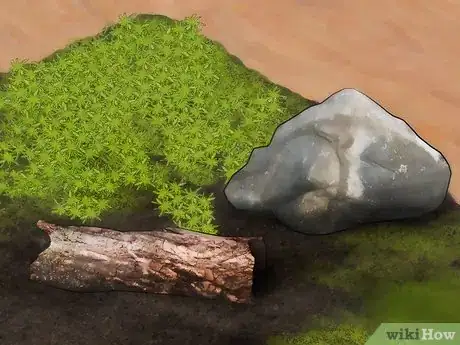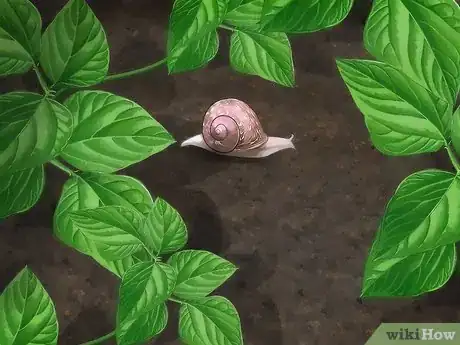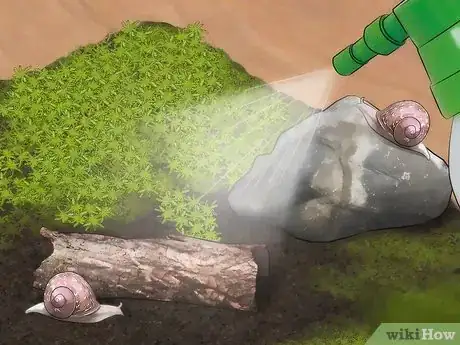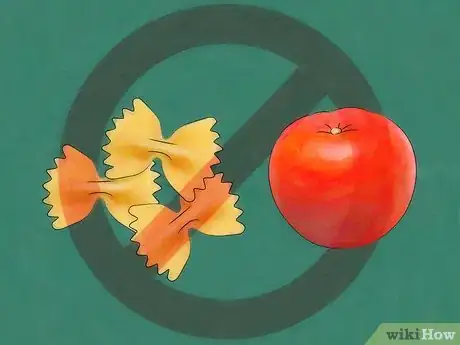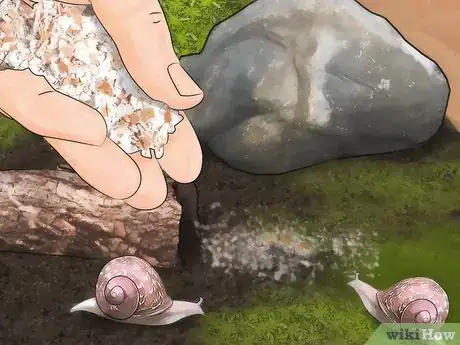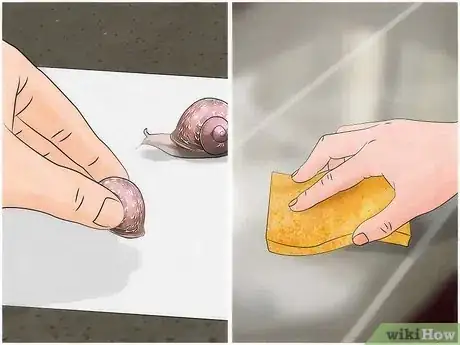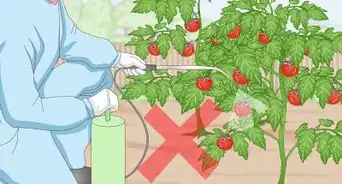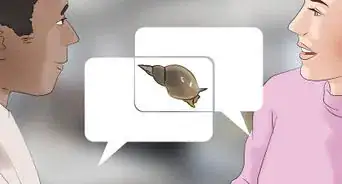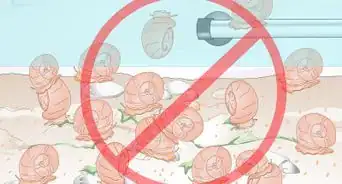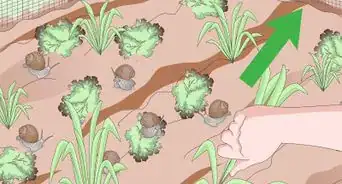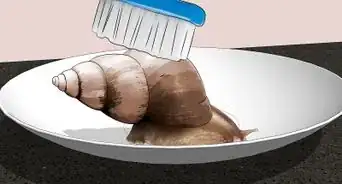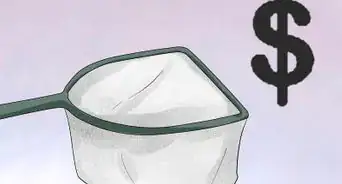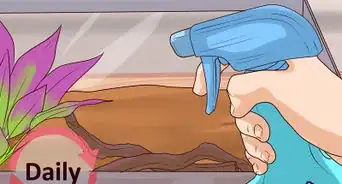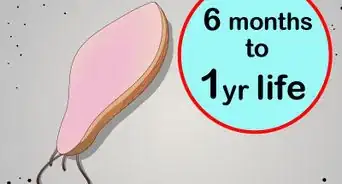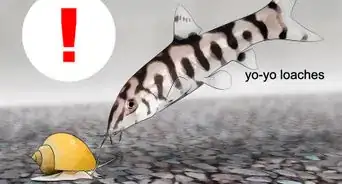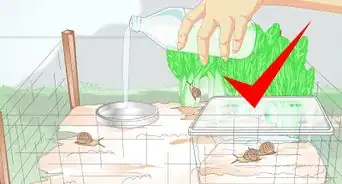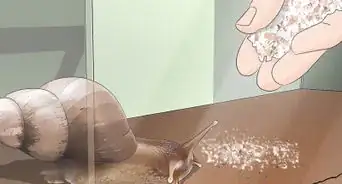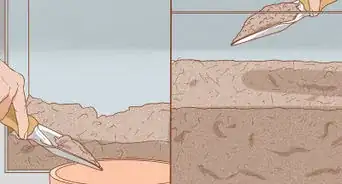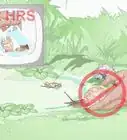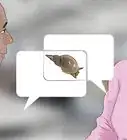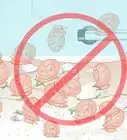wikiHow is a “wiki,” similar to Wikipedia, which means that many of our articles are co-written by multiple authors. To create this article, 88 people, some anonymous, worked to edit and improve it over time.
wikiHow marks an article as reader-approved once it receives enough positive feedback. This article received 117 testimonials and 95% of readers who voted found it helpful, earning it our reader-approved status.
This article has been viewed 653,571 times.
Learn more...
Garden snails are one of the easiest and cheapest pets to locate, since they are often present in large numbers eating the plants in your yard. While they do require feeding and watering at least every other day, they are easy to take care of if you understand what they need. It is possible to keep a snail alive for anywhere between five to several years as a pet providing you take care of them.
Steps
Making a Snail Home
-
1Use any container with air holes for short term projects. If you would like to watch the snail for a couple days, then release it back into your garden, something like a jam or pickle jar with holes poked would work pretty well. But your snails could get cut on the metal. So instead of a lid, you could use a piece of cheesecloth fitted over the rim of the container with an elastic band.
- Keep in mind that snails can climb vertical surfaces, and will attempt to escape if the container does not have a lid.
-
2Get a larger tank or terrarium such as a Kritter Keeper for long term pets. If you're keeping the snail for more than a few days, use a container that provides enough space for its size. Only baby snails or the smallest adult varieties can be kept long term in a plastic container.[1] Most require a larger tank to stay clean and healthy. You can purchase a terrarium at a pet store made for this purpose.
- Use a 5 gallon (19 L) tank or larger so the snail has room to move around. If you have several snails or intend to take care of young snails if the adult ones reproduce, get a larger tank.
Advertisement -
3Make sure air can enter the terrarium. Just like humans, snails inhale air to use the oxygen, and exhale carbon dioxide. Your terrarium needs holes to let air in, ideally on multiple sides to allow for better air circulation. Some people have reported snails becoming more active when air was allowed to exit through a tiny gap in the bottom of the terrarium.[2]
-
4Keep the tank room temperature. As long as the tank is kept moist, many garden snails will be fairly resilient when it comes to temperatures. However, they will be most active and safe at room temperature. Keep them in the shade during hot weather, and avoid exposing them to freezing temperatures.
-
5Purchase terrarium soil or earth from outside. To reduce the chance of harmful bacteria, pesticides, and other dangers, purchase terrarium soil from a pet shop.[3] The next best option is to use natural earth from a garden not treated with pesticides or chemical fertilizers. Put the soil in a layer at the base of the terrarium, fully covering the glass or plastic.
- Avoid potting soil for plants, which can contain chemicals harmful to snails.
-
6Add a layer of natural material on top of the soil. Place a layer of sphagnum moss, peat, compost, or vermiculite on top of the soil.[4] This traps moisture inside the soil, which creates good conditions for snails.
-
7Decorate your snail's home. Put objects in the tank that the snails can hide in and climb onto, which will make them more comfortable and more interesting to watch. At most pet stores they have fake logs for small animals to crawl through or short hamster tubes that snails might enjoy. You might find material you can use in your garden as well! Never use rocks in your terrarium as snails could fall off the sides of the glass and break their shell. Bark and sticks usually fall apart after a few weeks, so you will need to replace them.
- Never use cardboard ornaments for your snails, as it will grow moss and fungi, resulting in your snail's death.
-
8Attach a heavy or fastened lid. Snails are surprisingly strong for their size, and are able to climb to the top of almost any tank. A lid that can fasten closed with a latch will probably prevent them from escaping. If your terrarium's lid does not have a latch, weigh down the lid with a pile of books or other heavy objects.
-
9Find snails to put in your container. Look for snails in muddy garden areas, old plant pots, or other moist places. If you can't see any, place a few pieces of fresh vegetables in your garden and check back later to see if there are snails eating them. Heavy rain often drives snails out into the open, so you'll have a better chance of success if you look during or following a rainstorm.
- Garden snails are almost always safe to handle, but it's a good idea to wash your hands before and after touching them to minimize the chance of harm to you or your snail.[5]
- If you do not want to touch the snails, wear gloves.
Taking Care of Snails
-
1Keep the tank moist with a spray bottle. Spray water on the moss, peat, or other material you've placed at the base of your tank whenever it starts to dry out. Keep this material moist at all times. If you can't spray every other day at least, you could leave an ice cube in the tank, or a rag or sponge soaked with water.
-
2Lightly spray the snails with water. The snails may stay healthier if you spray them with water every day or two, but pay attention to water temperature. Spray with warm water in cold weather, and use room temperature water during hot weather or if you have central heating.[6]
-
3Feed your snails clean food daily. Most snails are not picky eaters, and will enjoy most types of fresh fruit and vegetable. Wash all food thoroughly in clean water before you give it to them, and cut large vegetables into chunks or slices.[7] Some foods, such as carrots and potatoes, may need to be boiled for a few minutes to soften them slightly. Always let cooked food cool completely before giving it to your snails.
- Some snails may eat raw meat, raw eggs, brown bread, or (soaked, but uncooked) oatmeal. Experiment to give your snails a varied diet to increase the chance that they are receiving all the nutrition they need.[8]
-
4Learn which foods might harm your snails. Not much research has been done on the best nutritious diet for snails, and there is disagreement among snail owners about which foods may or may not harm the snails. Here are a list of food ranging from the most to least dangerous:[9]
- Salty foods could kill your snails. Avoid anything with salt crystals on it entirely.
- Avoid pasta, rice, and millet. These starchy foods can potentially cause blockage in the snail's digestive system. Do not feed them to your snails.
- Homegrown plants may be exposed to car exhaust while growing, which could cause harm.
- Acidic foods such as citrus fruit, tomatoes, and kiwi fruit may or may not harm snails. Use them in small quantities along with other foods.
-
5Give them a material they can use to build their shells. You can use any source of calcium as long as it is clean and washed. Egg shells or discarded snail shells in your garden will work for the average pet owner. If you are trying to breed snails you may wish to buy more concentrated calcium sources from a pet store, such as cuttlefish bones or pure calcium supplements.[10]
- Have a source of calcium available in the tank at all times. Replace it whenever it runs out, but use calcium supplements with greater than 20% calcium sparingly.[11]
-
6Keep your snails clean. Clean a snail with a toothbrush whenever their shells get dirty. Do not use soap and brush gently to avoid damaging the shell. Pour a few drops of water onto the shell to help remove stuck-on soil.
-
7Clean their tank every month or whenever it gets dirty. Pick up the snails gently by coaxing your finger underneath their head, then place them on a towel in a temporary container. Remove the old soil to discard in the garden. Use a wet, slightly soapy sponge to scrub the walls and base of the tank to get rid of snail slime marks and scum. Rinse the tank carefully to make sure every trace of soap is gone, as it could harm the snails.
- Don't leave the snails untended if the container is small.
- Do not shut the snails in a container without air.
- When replacing the soil and other materials in the clean tank, follow all of the steps described under Making a Snail Home
Community Q&A
-
QuestionHow do you know if a snail is going to have a baby?
 Community AnswerIt will start burrowing under the substrate and lay its eggs. If you have a clear tank, you will be able to see the eggs in little clusters on the bottom.
Community AnswerIt will start burrowing under the substrate and lay its eggs. If you have a clear tank, you will be able to see the eggs in little clusters on the bottom. -
QuestionCan I feed them bananas?
 Community AnswerYes. Snails love mushed-up banana.
Community AnswerYes. Snails love mushed-up banana. -
QuestionIf a snail bubbles up, does it mean it is suffocating?
 Community AnswerNo, it means it is scared. It might have gotten frightened by you or something in it's tank.
Community AnswerNo, it means it is scared. It might have gotten frightened by you or something in it's tank.
Warnings
- While other species, like the Giant African land snail and Apple seed snails enjoy water dishes, garden snails may drown. Use a spray bottle or spray gun to moisten the tank, not a water dish.⧼thumbs_response⧽
- Do not try to decorate the shell of a living snail with glue or other art materials. These materials could kill the snail.⧼thumbs_response⧽
- Supervise young children to make sure they do not eat the snail, which can potentially cause serious illness.⧼thumbs_response⧽
Things You'll Need
- Garden snails
- A container, jar, or terrarium tank
- Sphagnum moss, peat, compost, or vermiculite (these are available at pet stores or online)
- Decorations (sticks, rocks, etc.)
- Fresh fruit and vegetables
- Egg shells or another calcium source
- Spray bottle or spray gun of water
References
- ↑ http://www.petsnails.co.uk/care/intro.html
- ↑ http://www.molluscs.at/gastropoda/terrestrial.html?/gastropoda/terrestrial/food.html
- ↑ http://www.molluscs.at/gastropoda/terrestrial.html?/gastropoda/terrestrial/food.html
- ↑ http://www.petsnails.co.uk/care/intro.html
- ↑ http://www.petsnails.co.uk/care/handling.html
- ↑ http://www.petsnails.co.uk/care/feeding.html
- ↑ http://www.petsnails.co.uk/care/feeding.html
- ↑ http://www.petsnails.co.uk/care/feeding.html#f_food
- ↑ http://www.petsnails.co.uk/care/feeding.html#f_food
About This Article
To care for garden snails, mist them and the inside of their tank with water every other day, which will keep them moist so they don't dry out. Also, feed your snails washed fruits and vegetables every day. You may need to cut large food into smaller pieces so your snails have an easier time eating it. You also want to make sure there's a calcium source in the tank at all times, like cuttlefish bone or calcium supplements, which your snails need to build their shells. To learn how to set up the perfect tank for your snails, keep reading!
